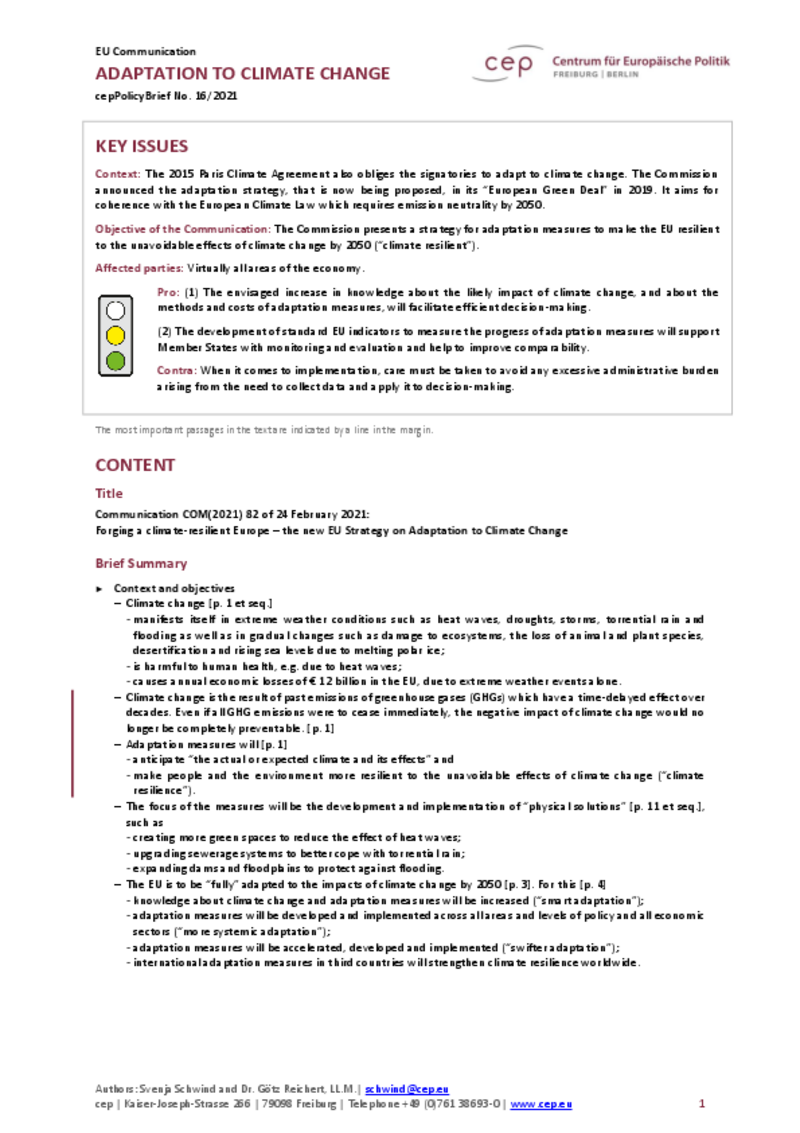
Environment
Adaptation to Climate Change (cepPolicyBrief COM2021 82)
cepPolicyBrief
The Centrum für Europäische Politik (cep) has examined this strategy in a cepPolicyBrief. "The fact that the EU is developing uniform indicators to measure the progress of adaptation policies and thereby support the member states in monitoring and evaluation is only to be welcomed," says cep-climate-expert Götz Reichert, who co-authored the analysis with cep-economist Svenja Schwind. According to Schwind, the targeted expansion of knowledge facilitates efficient decision-making.
The targeted adaptation measures focus, among other things, on the creation of green spaces to mitigate heat waves, the expansion of sewage systems to better cope with heavy rainfall, and the raising of dykes and dams to protect against floods.
"Uniform assessment standards facilitate the comparability of data between the member states," Schwind emphasises. The cep-expert explains that this can, for example, protect Europe's threatened biodiversity. "Adaptations to climate change should not be considered on their own, but should be used to achieve other goals," says the scientist.
Download PDF
| Adaptation to Climate Change (cepPolicyBrief COM2021 82) (publ. 08.10.2021) | 210 KB | Download | |
 | |||




